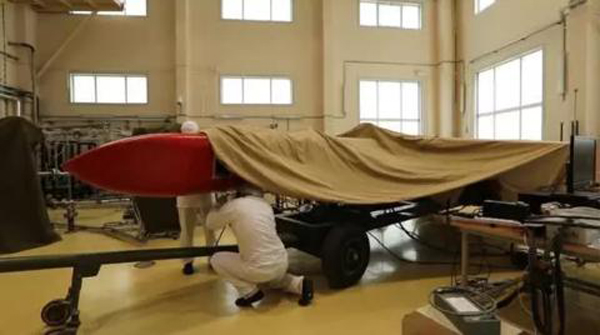Us media: the test of Russia’s plan to recover the wreckage of nuclear cruise missiles is still unclear
The reference news network reported on September 3. According to a report on the website of American diplomatic scholars on August 23, the American Consumer News and Business Channel recently reported that,After a new Russian nuclear-powered cruise missile crashed in a test last November, the crew of some Russian professional ships are preparing to recover their wreckage and parts containing nuclear materials in the Barents Sea.The test was carried out at a launch site on a new island off the Russian mainland, and the missile flew about 35 kilometers.
In November 2017, Russia test-fired the Haiyan nuclear-powered cruise missile. The US intelligence community assessed that only this test was partially successful. The missile crashed after flying for just over two minutes, but a U.S. government source told reporters that the defense intelligence agency assessed that the test launch last November was the only test launch that successfully used all the components of the missile. The missile is called KY30 by the American intelligence community.
According to the report, it is unclear whether the crashed missile poses an environmental threat in terms of nuclear pollution, but the assessment report of the National Defense Intelligence Agency suggests that the reactor on the missile may have been successfully started. Although Russia made it clear that nuclear materials were used in the propulsion system of KY30, the specific design of this missile is still unclear.
In addition, the test launch in November 2017 was not the only test launch of KY30. US intelligence agencies began tracking the missile test in June 2016, and the last known test took place on February 26, 2018. The KY30 has been tested 12 times, and in November 2017, it was the only partially successful test launch.

Profile photo: A partial photo of the Haiyan nuclear-powered cruise missile previously released by the Russian Ministry of Defense. (Image from the Internet)
In March 2018, Russian President Vladimir Putin delivered a speech at the Russian Federation Conference, revealing a series of new missile systems. He pointed out: "At the end of 2017, Russia successfully launched the latest nuclear-powered missile." He continued, "In flight, the nuclear-powered engine reached the design capacity and provided the necessary propulsion." He also claimed that the missile’s range is "infinite" and it can be "maneuvered for a long time as needed".
As the Russian government accelerated its preparations for recovering the crashed missile, the open-source image analyst at the Center for Non-proliferation Studies in james martin managed to conceive some information about the KY30 test. Geoffrey Lewis, director of the East Asian Studies Program of the Center for Non-proliferation Studies, identified the launch site as a place called panico Wo on Yuzhny Island in the New Island Islands by using a few seconds of video footage of missile launch played by Putin during his speech in March.
The panico Wo launch site is located in the north of at least two support areas that provide support for the ongoing test launch activities. There are containers and buildings in these support areas. It is not clear whether the Russian only test-fired the KY30 at the panico Wo launch site in recent months.
Using the daily images provided by Planet Laboratories, Lewis and his team also found ships in the Barents Sea, northwest of Wavo, panico. Based on the video broadcast in March, Russia may have launched the missile in the northwest direction, aiming to hit a target on the North Island, the big island in the northern part of the Shinrikyo Islands.

Shea Cotton and Michael Dietzmann, researchers from the Center for Non-proliferation Studies, tracked and analyzed these ships. However, it seems that these ships have not yet started recycling operations. One of them may be the nuclear-powered mother ship "Sherebrinka", which recently took Murmansk city along the Barents Sea in northwest Russia as its home port.
Grace Liu, a researcher at the Center for Non-Proliferation Studies, told reporters: "By monitoring the ship tracking database, we found that there were several ships with specific capabilities around the key areas we confirmed before and after the suspected missile launch period (that is, ships known to be able to carry nuclear fuel or aircraft carriers capable of launching cruise missiles). One of them is a large mother ship that we suspect is used to transport cruise missiles to the launch site. "
According to the report, once the location of the missile wreckage is confirmed, the recycling work may begin later this month. (Compile/Yan Fang)